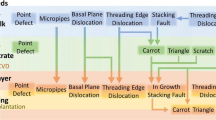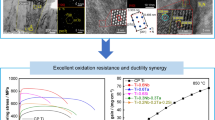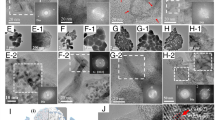Abstract
The existence of a large number of crystal defects in polycrystalline Si(poly-Si) has a significant impact on its electrical property. In order to solve this problem, this study adopts the industrially produced native efficient poly-Si wafers, with 120 s rapid heat treatment experimental conditions under different temperatures. The evolution of the poly-Si crystal defects such as the grain boundary and dislocation as well as the changes in the electrical properties of the samples before and after annealing have been analyzed.. The results show that the annealing process causes a significant reduction in the defects in the samples significantly and improvement in the electrical performance. After annealing at 1200 ∘C, the dislocation density of ploy-Si decreases to 710 cm−2 from 1120 cm−2, revealing a drop of 36.61%. Furthermore, a 1.62% reduction in the high Σ value (Σ27) grain boundary and 3.19% increase in the Σ3 grain boundaries. After the heat treatment, the minority carrier lifetime of the sample increases by up to 0.6 μs. In addition, the size of the grains increases and the dislocation density reduces while the grain orientation is not changed during the heat treatment. The results show that the performance of poly-Si does not linearly improve with temperature, but is related to the crystal structure of Si.
Similar content being viewed by others
References
Di Sabatino M, Stokkan G (2013) Defect generation, advanced crystallization, and characterization methods for high-quality solar-cell silicon. Phys Status Solidi A 210(4):641–648
Hartman K, Bertoni M, Serdy J et al (2008) Dislocation density reduction in multicrystalline silicon solar cell material by high temperature annealing. Appl Phys Lett 93(12):122108
Mokhtari M, Fujiwara K, Koizumi H et al (2016) Effect of grain boundary grooves at the crystalmelt interface on impurity accumulation during the unidirectional growth of multicrystalline silicon. Scr Mater 117:73–76
Peshcherova SM, Nepomnyashchikh AI, Pavlova LA (2014) The electric activity of special grain boundaries in multicrystalline silicon grown from metallurgical refined silicon. Tech Phys Lett 40(11):1000–1002
Luo X, Prakash RR, Chen J et al (2016) Effect of Σ3 generation on random grain boundaries in multicrystalline silicon. Superlattices Microstruct 99:1–4
Li X-Q, Yang D-R, Yu X-G, Que D-L (2011) Precipitation and ge-tering behaviors of copper in multicrystalline silicon used for solar cells. Sci Direct 21:691–696
Lin HK, Wu MC, Chen CC, Lan CW (2016) Evolution of grain structures during directional solidification of silicon wafers. J Cryst Growth 439:40–46
Ganapati V, Schoenfelder S, Castellanos S, Oener S et al (2010) Infrared birefringence imaging of residual stress and bulk defects in multicrystalline silicon. J Appl Phys 108:063528
Gumbsch P, Riedle J, Hartmaier A et al (1998) Controlling factors for the Brittle-to-ductile transition in tungsten single crystals. Science 282:1293–1295
Takeuchi S, Argon AS (1976) Review: steady-state creep of single-phase crystalline matter at high temperature. J Mater Sci 11:1542–1566
Wang W, Yang D, Yu X, Que D (2008) Effect of point defects on the recombination activity of copper precipitates in p-type Czochralski silicon. J Mater Sci Mater Electron 19:S32–S35
Acknowledgements
The author would like to thank Dr. Liexing Zhou for the support in the EBSD analysis and Prof. Wei for the discussion about the experiment. This work was funded by the National Natural Science Foundation of China (61404063).
Author information
Authors and Affiliations
Corresponding authors
Rights and permissions
About this article
Cite this article
Shen, H., Gao, L., Wei, K. et al. Effect of Rapid Heat Treatment on the Crystal Defect Evolution and Electrical Properties of Highly Efficient Polycrystalline Silicon. Silicon 11, 1083–1087 (2019). https://doi.org/10.1007/s12633-018-9904-2
Received:
Accepted:
Published:
Issue Date:
DOI: https://doi.org/10.1007/s12633-018-9904-2




